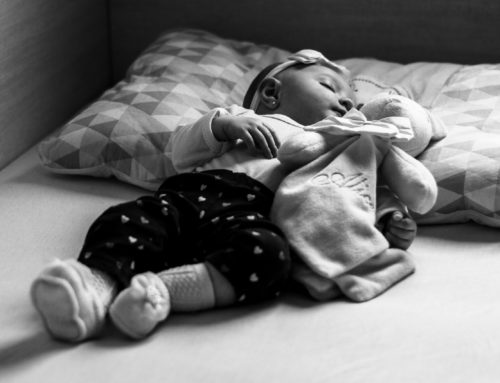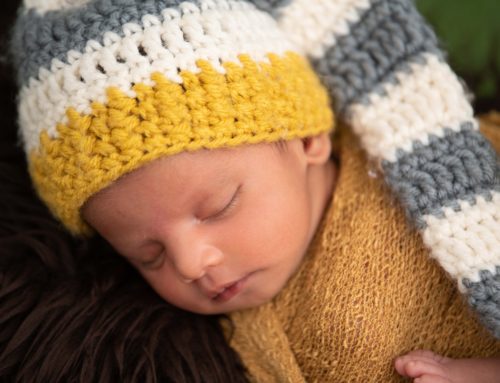Are you tired of having countless sleepless nights? Getting your little ones to sleep all night can be one of the most challenging and frustrating stages of early parenthood. However, the good news is that it’s possible and easier than you might think! You just have to know the tricks to help you and your baby get to where you need to go. So, ready to get your serenity back? Here are 5 tips and tricks to help your baby confidently sleep through the night.
1. Set Up A Comfortable Environment For Them
Everyone wants to feel safe and sound when it’s time for bed. This goes for your baby as well no matter how old they are! It’s important to make sure that you have arranged a safe sleeping environment for them so that they have everything needed to sleep peacefully. Some safety precautions include:
- Setting up a safe crib
- Making sure they are sleeping on a flat surface
- Use a pacifier: Pacifiers can be a great way to soothe your baby just make sure it’s not attached to anything such as clothing or a toy.
- Have them sleep on their back
- Make sure the room temperature is comfortable for your baby to avoid overheating
- Keep toys and extra blankets out of their crib
- Use a swaddle
Once you checked these precautions off the list, your baby is set up for success and ready to go! Now, we can take a deeper dive into what needs to be done regularly to keep your baby resting peacefully in their sleeping space.
2. Know Your Baby’s Cues
If you’re a new parent, don’t be alarmed if it’s taking some time to learn your baby’s cues. It’s perfectly normal! Start paying attention to the differences in your baby’s body language when they are tired, hungry, or needing to potty. Learning these cues can help you get to a deeper understanding of what your child needs. This allows you to tend to them faster and can lead to them getting to sleep quickly as well. Some typical cues babies might do in order to signal that they are tired include:
- Closing their fists
- Yawning
- Pulling their ears
- Rubbing their eyes
- Difficulty focusing
- Sucking on their fingers
- Arching Backwards
3. Bedtime Routine
After learning your baby’s cues you should start to also pick up their general patterns. Keep a close eye out for when they are giving you the cue that they are sleepy and then note what times of day that typically happens. Based on that information, you can start creating your naptime and bedtime routine. Having a consistent routine is the absolute best way to get your baby back on track. Babies respond super well to what they know, so if you are doing the same things everyday, they are going to start to make the connection when it’s time to sleep and want to fall into that habit with you. It helps to start off with recognizing what they need because learning their sleeping cues and creating your routine based off of that, will benefit you guys the most. Once you understand your baby’s patterns, you can even start to slowly tweak those patterns in different directions so it’s more aligned to what you want, but it all starts with consistency and patience!
4. Stretch Out Nighttime Feedings
A great way to start tweaking your routine without overwhelming your little one, would be to slowly stretch out their nighttime feedings. There’s a typical window of time each night when they are likely to wake up and need a feeding. You can slowly stretch the bounds of this window overtime so that nighttime feedings suit both your schedules instead of just your baby’s schedule. However, make sure you don’t fully wake up your baby during the nighttime feed. You want them to stay in sleepy mode as much as possible. Resist turning on the lights if possible and anything else that might wake them up. If they need a diaper change, do it in the middle of their feed. This way, they will be sleepy all over again by the time it’s time to put them back in their crib.
5. Don’t Feed Them To Sleep
Unless you’re doing a night feeding, do not feed your baby to sleep! Getting them used to being fed, letting them be awake and then putting them to sleep, can set you up greatly for long-term results. If your baby gets used to feeding and snuggling with you until they fall asleep, they will eventually become very dependent on that in order to sleep peacefully and that is a habit that can be extremely hard to break. Allowing them to wake up after a feeding also gives them time to release anything within their bodies that they need to before sleep such as gas, burps or a full diaper. If you give them the opportunity to get that out ahead of time, they are more likely to have a much longer uninterrupted slumber.
How We Can Help
If you are trying every technique under the sun and are still having a difficult time getting your baby to stay asleep, it may be time for you to seek out some professional guidance. Sleep consultants are infant and toddler sleep specialists that can help families get their nights back to normal by providing remote or in-home sleep training. Sleep Shop is staffed with many well certified sleep consultants. We have made it our mission to spare as many families from the stress of staying up all night by sharing our tried and true techniques honed through study as well as years of personal experience. The first few months of parenthood should be an enjoyable experience for both mothers and fathers. We want to make sure that happens for you! We tailor our techniques to each individual family’s unique parenting style and goals so that we can provide you with the best long-term solutions.
About The Sleep Shop
The Sleep Shop is led by Melissa, a mother of four, and is a member of the International Association of Professional Sleep Consultants.
We offer one-one-one unlimited consulting, sleep classes with our founder, phone consultations, 1-week jumpstarts, infant sleep guides, 2 weeks of consulting, toddler nap guides, toddler sleep guides, toddler total resets, and “the toddler tune-up”.
We offer sleep consulting services in all of New York City including Manhattan, Brooklyn, Queens, the Flat Iron District, Turtle Bay, Tribeca, Upper East Side, Soho, Staten Island, and the greater NYC area.
Contact us today to learn more.





